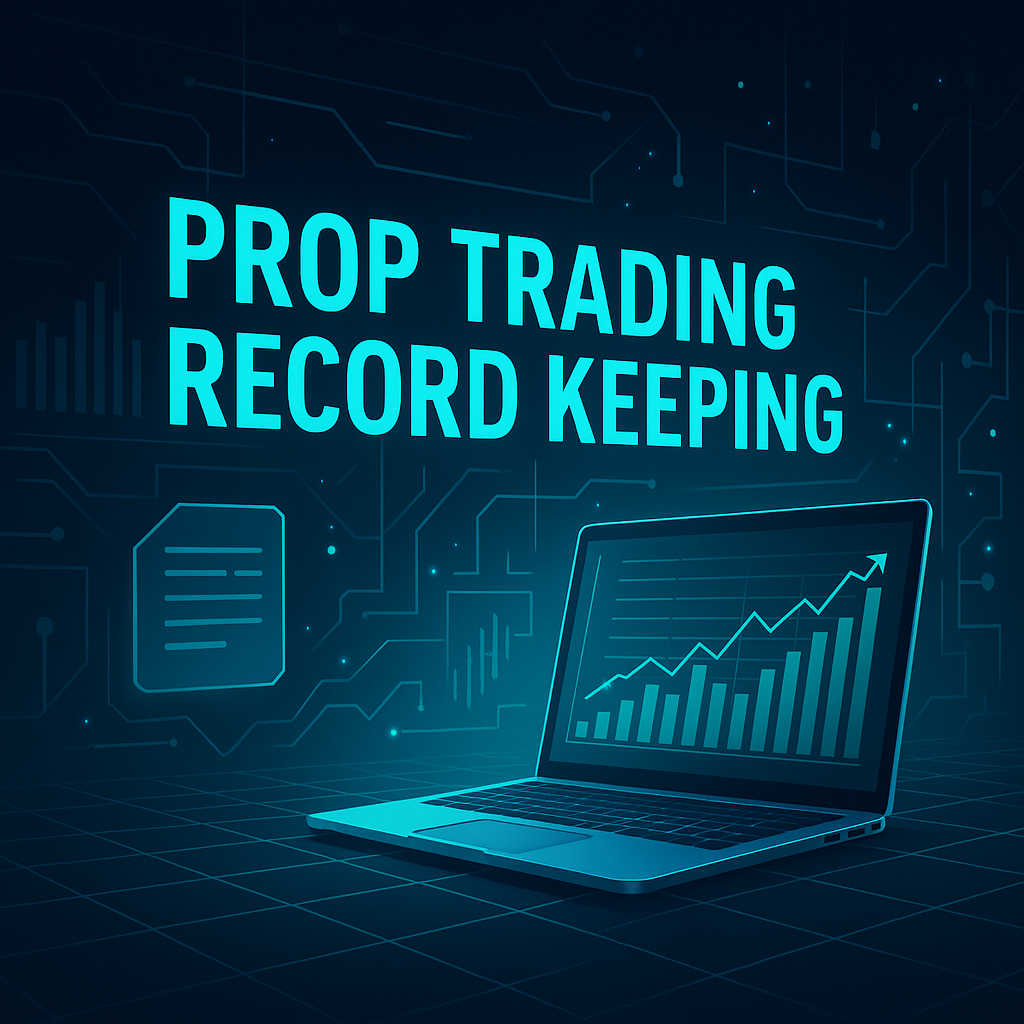How to Keep Accurate Records as a Funded Trader
In the world of proprietary trading, success isn’t just about strategy—it’s also about discipline. One of the most overlooked yet critical disciplines is prop trading record keeping. While many traders focus on entries, exits, and setups, only a few consistently track their trades, performance metrics, and emotional decisions.
In this guide, we’ll explore why record keeping is essential for funded traders, how to build a solid documentation routine, and what tools or methods can make the process effortless. Whether you’re just starting or already trading with Larsa Capital, strong documentation habits will separate you from the rest.
Why Is Prop Trading Record Keeping So Important?
Accurate records are more than a journal—they serve as a mirror reflecting your trading behavior. By maintaining proper records, traders gain:
-
Clarity on performance: You can clearly identify your win rate, average R-multiple, drawdown, and profitability over time.
-
Accountability: Keeping track of mistakes reduces the chance of repeating them.
-
Rule compliance: With challenges often tied to strict rules (like daily loss limits), documentation ensures you stay within guidelines.
-
Progress tracking: Monitoring your journey helps you understand which strategies work and where you need improvement.
Even if you’re confident in your memory, having written or digital records removes ambiguity and supports professional-level decision-making.
What Should a Funded Trader Document?
For effective prop trading record keeping, consistency matters more than complexity. Your records should include:
1. Trade Details
Capture the basic information for each trade:
-
Asset (e.g., EUR/USD, XAU/USD)
-
Date and time of entry/exit
-
Entry price and exit price
-
Lot size and position type (long/short)
-
Stop-loss and take-profit levels
-
Platform execution details (order type, slippage, spread)
2. Rationale and Strategy
Note why you entered the trade. Was it a breakout setup? A mean-reversion signal? Include chart annotations or screenshots to visualize your logic.
3. Emotional State
Track how you felt before, during, and after the trade. Emotions like fear, greed, or hesitation often impact execution and risk management more than the strategy itself.
4. Performance Metrics
At the end of each session or week, summarize:
-
Total number of trades
-
Win/loss ratio
-
Average reward-to-risk (R:R)
-
Profit or loss
-
Compliance with trading plan
Tools and Templates to Simplify the Process
While some traders prefer spreadsheets, others opt for apps or journaling tools. Choose what suits your workflow best:
✅ Spreadsheets
Excel or Google Sheets can be customized to include all metrics. They’re free, flexible, and powerful for generating visual insights.
✅ Digital Journals
Tools like Notion or Evernote allow structured note-taking with screenshots, links, and tags.
✅ Dedicated Trading Journals
There are platforms designed specifically for traders. These apps often auto-sync trades from your broker and generate analytics dashboards.
Regardless of the tool, the key is to stay consistent. Recording your data right after the trading session helps ensure accuracy and minimizes forgetfulness.
Integrating Prop Trading Record Keeping into Your Routine
📅 Make It a Habit
Schedule 10–15 minutes at the end of each session solely for reviewing and documenting trades. Treat it like brushing your teeth—non-negotiable and part of your routine.
🎯 Set Clear Objectives
Before journaling, decide what you want to track. Are you focusing on consistency? Improving risk-to-reward? Reducing emotional trading? Your journaling should reflect your growth goals.
🧠 Use It for Self-Coaching
Don’t just document—analyze. Revisit your journal weekly to uncover recurring patterns, strengths, and weaknesses. This self-reflection turns data into progress.
A Closer Look: Using Record Keeping to Improve Challenge Success Rates
Traders at Larsa Capital must adhere to specific rules, such as maximum drawdown and consistency. Proper documentation directly supports success in such environments. By reviewing your records:
-
You can preemptively spot violations before they occur.
-
You’ll identify which setups contribute most to your gains.
-
You’ll avoid revenge trading or emotional overtrading.
Additionally, when scaling up or upgrading to higher funded levels, historical performance records may support your case as a disciplined, data-driven trader.
Common Mistakes in Prop Trading Record Keeping
Many traders begin documenting their trades enthusiastically but lose consistency over time. Here’s how to avoid common pitfalls:
-
Skipping bad trades: Every trade—win or lose—holds lessons. Document them all.
-
Overcomplicating the process: Keep your template simple and repeatable.
-
Failing to review: Journaling without analysis limits the benefits.
-
Focusing only on numbers: Emotions and mindset are just as critical to log.
By recognizing these patterns early, traders can refine their approach and maximize the benefits of tracking.
Conclusion: Turn Data Into Discipline
Your trading journal is your most honest coach. It reflects your strategy, mindset, and risk management in one place. Proper prop trading record keeping allows traders to evolve with clarity and control—both essential for long-term success.
At Larsa Capital, where professionalism and precision are vital, strong record-keeping habits aren’t optional—they’re strategic assets. Start today, stay consistent, and you’ll soon find that your edge lies not just in your strategy, but in your process.

